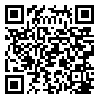BibTeX | RIS | EndNote | Medlars | ProCite | Reference Manager | RefWorks
Send citation to:
URL: http://ijpcp.iums.ac.ir/article-1-667-en.html
Abstract
Objectives: The present study represents an attempt to explain the mechanisms by which, parental conflict, a stressful life event in children's lives, may have an impact on children's psychological health. For this purpose, besides examining predictive relationships between in-dependent and criterion variables, we also evaluated the mediating and moderating interactions of three important variables, children's appraisals of parental conflict and emotional security in the family and their emotional coping strategies, indicative of perceived insecurity in the family, in the prediction of children's psychopathological symptoms. Method: This research used a stratified random sampling procedure with 413 fifth-grade primary school-children in the city of Tehran (220 girls & 193 boys).To assess children’s perceived emotional security in the family, their emotional coping strategies and their perception of parental conflict, the Security In the Family System (SIFS) Scale and the Children’s Perception of Interparental Conflict (CPIC) Scale was administered to them. To assess children’s affective and behavioral difficulties, mothers and teachers answered the Strengths and Difficulties Questionnaire (SDQ). Results: Findings reveal a significant relationship between the children’s feeling of insecurity in the family as well as children’s appraisal of interparental conflicts on children’s affective and behavioral symptoms (p<0.01). In addition, the mediating role of appraisal in the relation between emotional security and affective symptoms, the mediating role of the emotional reaction in relation to conflict appraisal with the psychopathological symptoms of the child, as well as the interactional role of emotional insecurity and child appraisal of parental conflicts, were confirmed. Conclusion: Results indicate that in the context of parental conflict, children’s appraisal of interparental conflict is a risk or vulnerability factor and family emotional security is a protective factor for children’s psycho-pathological symptoms.
Received: 2009/05/31 | Published: 2009/05/15
| Rights and permissions | |
 |
This work is licensed under a Creative Commons Attribution-NonCommercial 4.0 International License. |



